Related Research Articles
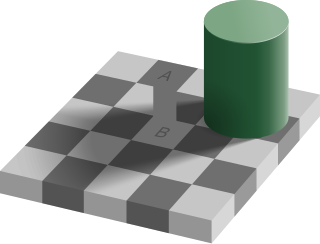
The philosophy of perception is concerned with the nature of perceptual experience and the status of perceptual data, in particular how they relate to beliefs about, or knowledge of, the world. Any explicit account of perception requires a commitment to one of a variety of ontological or metaphysical views. Philosophers distinguish internalist accounts, which assume that perceptions of objects, and knowledge or beliefs about them, are aspects of an individual's mind, and externalist accounts, which state that they constitute real aspects of the world external to the individual. The position of naïve realism—the 'everyday' impression of physical objects constituting what is perceived—is to some extent contradicted by the occurrence of perceptual illusions and hallucinations and the relativity of perceptual experience as well as certain insights in science. Realist conceptions include phenomenalism and direct and indirect realism. Anti-realist conceptions include idealism and skepticism. Recent philosophical work have expanded on the philosophical features of perception by going beyond the single paradigm of vision.

Maurice Francis Richard Shadbolt was a New Zealand writer and occasional playwright.

Maurice Gough Gee is a New Zealand novelist. He is one of New Zealand's most distinguished and prolific authors, having written over thirty novels for adults and children, and has won numerous awards both in New Zealand and overseas, including multiple top prizes at the New Zealand Book Awards, the James Tait Black Memorial Prize in the UK, the Katherine Mansfield Menton Fellowship, the Robert Burns Fellowship and a Prime Minister's Award for Literary Achievement. In 2003 he was recognised as one of New Zealand's greatest living artists across all disciplines by the Arts Foundation of New Zealand, which presented him with an Icon Award.

Groton is a town in northwestern Middlesex County, Massachusetts, United States, within the Greater Boston metropolitan area. The population was 11,315 at the 2020 census. It is home to two prep schools: Lawrence Academy at Groton, founded in 1792 and the third-oldest private school in Massachusetts; and Groton School, founded in 1884.
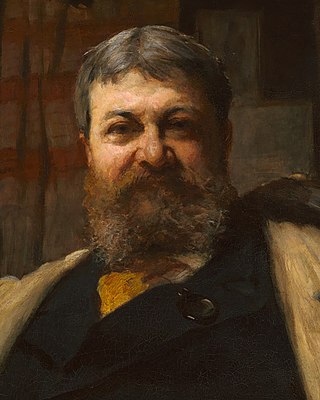
Henry Hobson Richardson, FAIA was an American architect, best known for his work in a style that became known as Richardsonian Romanesque. Along with Louis Sullivan and Frank Lloyd Wright, Richardson is one of "the recognized trinity of American architecture".

Mount Eden is a suburb in Auckland, New Zealand whose name honours George Eden, 1st Earl of Auckland. It is 4 kilometres (2.5 mi) south of the Central Business District (CBD). Mt Eden Road winds its way around the side of Mount Eden Domain and continues to weave back and forth as it descends into the valley; it runs south from Eden Terrace to Three Kings. Mt Eden village centre is located roughly between Valley Road and Grange Road. The domain is accessible on foot from many of the surrounding streets, and by vehicle from Mt Eden Road. The central focus of the suburb is Maungawhau / Mount Eden, a dormant volcano whose summit is the highest natural point on the Auckland isthmus.
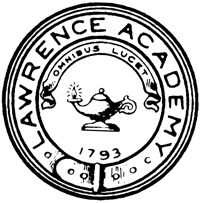
Lawrence Academy at Groton is a private, nonsectarian, coeducational college preparatory boarding school located in Groton, Massachusetts, in the United States. Founded in 1792 by a group of fifty residents of Groton and Pepperell, Massachusetts as Groton Academy, and chartered in 1793 by Governor John Hancock, Lawrence is the tenth oldest boarding school in the United States, and the third in Massachusetts, following Governor Dummer Academy (1763) and Phillips Academy at Andover (1778). The phrase on Lawrence Academy's seal is "Omnibus Lucet": in Latin, "Let light shine upon all."
Michael Robert Van Valkenburgh is an American landscape architect and educator. He has worked on a wide variety of projects in the United States, Canada, Korea, and France, including public parks, college campuses, sculpture gardens, city courtyards, corporate landscapes, private gardens, and urban master plans.

Samuel Willard was a New England Puritan clergyman. He was born in Concord, Massachusetts, graduated from Harvard College in 1659, and was minister at Groton from 1663 to 1676, before being driven out by the Indians during King Philip's War. Willard was pastor of the Third Church, Boston, from 1678 until his death. He opposed the Salem witch trials and was acting president of Harvard University from 1701. He published many sermons; the folio volume, A Compleat Body of Divinity, was published posthumously in 1726.
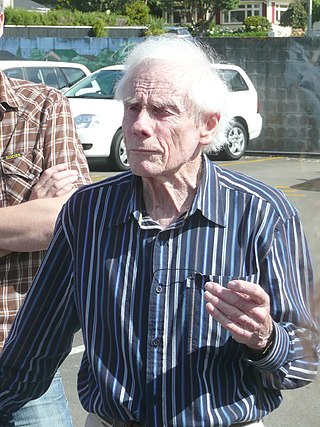
Stanley William Toomath was a New Zealand architect who practised mainly in Wellington. He was a founding member of the Architectural Group in Auckland in 1946, a life member of the Wellington Architectural Centre and a Fellow of the New Zealand Institute of Architects. Both the founding of the Group and the Architectural Centre were important factors in New Zealand's modernist architectural history.
James Albert Beard was a New Zealand architect, town planner, and landscape architect.
Anthony Lawrance Treadwell was an early member of the Wellington Architectural Centre and an accomplished modernist architect, architectural educator and painter. His architectural work has been published in numerous articles in New Zealand Home and Building, the Arts Year Book, the Journal of the N.Z.I.A. and the Wellington Architectural Centre's Design Review.
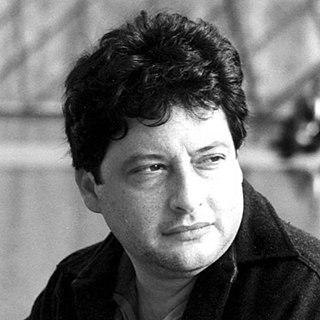
Andrés Mignucci Giannoni FAIA was a Puerto Rican architect and urbanist of Corsican ancestry. His work received recognition for its integration of the disciplines of architecture, urban design and landscape architecture in the creation of public spaces with a sense of place, human scale, and environmental responsibility. In 2005 Andrés Mignucci was elected to the College of Fellows of the American Institute of Architects. In 2012, he was awarded the Henry Klumb Award by the Puerto Rico College of Architects. In 2019, Mignucci received the Distinguished Professor Award by the Association of Collegiate Schools of Architecture, and was named Arts and Literary Arts Scholar in Residence at the Rockefeller Foundation's Bellagio Center in Bellagio, Italy.

N. John Habraken is a Dutch architect, educator, and theorist. His theoretical contributions are in the field of user participation in mass housing, the integration of users and residents into the design process. The visual result of his theory is the architecture of lively variety. Habraken is the initiator of the international "Participation movement" in architecture. His book "Supports: An Alternative to Mass Housing", first published in 1961, is the manifesto and starting point of this movement. The theme "Resident or user participation" has been linked to Structuralism and Open building.

Augustus Hemenway (1853–1931) was a philanthropist and public servant in Boston, Massachusetts, in the latter part of the 19th century. He was educated at Harvard University, the son of Edward Augustus Holyoke Hemenway and Mary Tileston Hemenway. His siblings were Edith Hemenway Eustis (1851-1904), Charlotte Augusta, Alice,, and Amy.

Indian Hill House is a private residence named for the Indian Hills of Groton, Massachusetts, online at Indian Hill House. Designed in 1962-63 by Maurice K. Smith, the house was built by Ralph S. Osmond & Sons.
The Bush Cinderella is a 1928 New Zealand film starring Dale Austen, the second Miss New Zealand.
Leendert Jacob Johannus Hoogerbrug, generally known as Len Hoogerbrug, was a New Zealand architect whose practice was based in Hawke's Bay.
The 1995 New Year Honours in New Zealand were appointments by Elizabeth II in her right as Queen of New Zealand, on the advice of the New Zealand government, to various orders and honours to reward and highlight good works by New Zealanders, and to celebrate the passing of 1994 and the beginning of 1995. They were announced on 31 December 1994.
References
- ↑ "Maurice Smith, Professor Emeritus of Architecture, Dies at 94". MITARCHA. Retrieved 22 January 2021.
- ↑ Habraken, N. John; Mignucci, Andrés; Teicher, Jonathan (20 June 2014). Conversations With Form: A Workbook for Students of Architecture. Routledge. ISBN 9781317683483 – via Google Books.
- Ahmad, Amin. (1994) The Smith House: Built Collage. Thresholds #9, March 1994:Department of Architecture, MIT, Cambridge, Massachusetts. pp. 3, 6.
- Clark, Justine. Walker, Paul. (2000) LOOKING FOR THE LOCAL: ARCHITECTURE AND THE NEW ZEALAND MODERN. Victoria University Press. Wellington New Zealand. pp. 49, 110.
- Donat, John. "House, Groton, Massachusetts" World Architecture (1967) v. 4, pp. [24]-[33]
- Gatley, Julia (ed.). (2008). "Long Live The Modern: New Zealand's New Architecture, 1904-84" Auckland, NZ: Auckland University Press.
- "'I'conoclast." Content. vol.3 (2015): 42-46.
- Jarzombek, Mark. (2013) "The Alternative Firmitas of Marice Smith" in Dutta, Arindam (Ed.) A second modernism : MIT, architecture, and the 'techno-social' moment Cambridge MA: MIT Press
- Koeper, H. F. "The Discussions: At the Summit" Journal of Architectural Education (1947–1974) Vol. 14, No. 2, ACSA-AIA Seminar: The Teaching of Architecture (Autumn, 1959), pp. 5–9.
- "Maurice Smith" in Lost Property - Auckland's Alternative Modernist Architecture and History
- McMahon, Peter, and Christine Cipriani. (2014) Cape Cod Modern: Midcentury Architecture and Community on the Outer Cape. New York: Metropolis Books.
- Miller, Nory "The MIT connection: design directions from MIT" Progressive Architecture (March 1982) v.63, n.3, pp. 104–108.
- Pedret, Annie. (1994) A-Form-isms: The Workings of Maurice Smith. Thresholds #9, March 1994: Department of Architecture, MIT, Cambridge, Massachusetts. pp. 3, 6.
- Pevsner, Nikolaus (Richards, J.M. ed.) (1959) Commonwealth I. Special Issue: Deals with the Dominions with temperate climes. Canada, South Africa, Australia, New Zealand. The Architectural Review, v. 126, # 752, October 1959. pp. 208.
- Plummer, Henry. (2003) Masters of Light: Twentieth Century Pioneers. Architecture and Urbanism Extra Edition, A+U 2003:11, Tokyo Japan. pp. 34(35).
- Plummer, Henry. "Blackman House, Groton, Massachusetts, 1962-63" Architecture and Urbanism (September 1989) n.9, pp.[182]-193,276.
- Robbins, Edward, Maurice K. Smith, Gary A. Hack and Tunney F. Lee "The Client in Architectural Education: Three Interviews at M.I.T." Journal of Architectural Education (Autumn, 1981) v. 35, n. 1, pp. 32–35.
- Smith, Maurice K."Dimensional self-stability and displacement in field-ordered directional alternations" Places (1988) v.5, n.2, pp. 72–86.
- Smith, Maurice K. "Fragment: frammenti di teoria, pratica" Rotch Library, MIT, Massachusetts
- Smith, Maurice "Frammenti di teoria/pratica = Fragments of theory/practice" Spazio e Societa (June 1982) v.5, n.18, pp. 36–63.
- Smith, Maurice K. "Particular associative habitable (built) environments" Progressive Architecture (March 1982), v.63, n.3, pp. 100–103.
- Smith, Maurice K. "A House by Maurice Smith" Harvard Art Review (winter 1967), v.2, n.1, pp. 40–45.
- Smith, Maurice K. "Not Writing on Built Form", Harvard Educational Review (1969), v.39, n.4, pp. 69–84.
- Smith, Maurice K., Hille, R.Thomas, and Andres Mignucci. 1982. Ranges of Continuity: Eleven Towns in Spain and Portugal. Exhibit, Department of Architecture, M.I.T.
- Wood, Peter "Doodlebug out of Canon's range" Architecture New Zealand (November–December 2005) n.6, pp. 104–106.